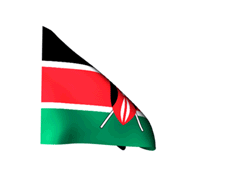SUPREME COURT REMOVES TWO THRESHOLD BARS UNDER THE INSOLVENCY AND BANKRUPTCY CODE 2016

In a recent case of Macquarie Bank Limited vs. Shilpi Cable Technologies Ltd. 2017 SCC OnLine SC 1493, the Supreme Court has removed two threshold bars to the processing of an application under Section 9 of the Insolvency and Bankruptcy Code 2016 (the Code), which provides that an application before the National Company Law Tribunal (NCLT) may be made by an operational creditor to initiate corporate insolvency resolution process against a corporate debtor who has failed to make payment for the provision of goods or services.
Herein, according to the Appellant, the Respondent had failed to pay an outstanding amount to the Appellant, against provision of services, even after repeated notices were issued to it. Therefore, the Appellant, as an operational creditor, issued a demand notice under Section 8 of the Code to the Respondent, calling upon it to pay the outstanding amount but the Respondent deniedany such liability.
Therefore, the Appellant had initiated the insolvency proceedings against the Respondent before the NCLT by filing an application under Section 9 of the Code. But the NCLT dismissed the Section 9 Application at the threshold on the grounds that along with the Application, the Appellant had not complied with the mandatory requirement of Section 9 (3) (c) of the Code, i.e. it had not filed a copy of the certificate from a financial institution maintaining the accounts of the Appellant to confirm that the Respondent had not paid to the Appellant
On appeal against this Order, the National Company Law Appellate Tribunal (NCLAT) also upheld the Order passed by the NCLT and further stated that an advocate/lawyer cannot issue a notice under Section 8 on behalf of the operational creditor, if there is nothing in the Tribunal’s record to suggest that the advocate/lawyer was authorized by the Appellant to do so or that the advocate/lawyer holds any position in the Appellant Company. Thus, for the same reasons, the NCLAT also held that the Section 9 Application was not maintainable.
The Appellant, therefore, has challenged the Order passed by the NCLAT before the Supreme Court and the Supreme Court decided upon the following issues:
- Whether, in relation to an operational debt, the provision contained in Section 9 (3) (c) of the Code is mandatory?
The Supreme Court has held that filing a copy of the certificate from a financial institution maintaining the accounts of the Appellant to confirm that the Respondent has not made any payment to the Appellant is not a pre- condition to triggering the insolvency process under the Code on the following grounds:
- The expression “confirming” implies that it is only an important piece of evidence which only “confirms” that there is no payment of an unpaid operational debt.
- Also, as per Form 5 under Rule 6 of the Insolvency and Bankruptcy (Application to Adjudicating Authority) Rules, 2016, the Annexure III provides for attachment of copies of the relevant accounts from the banks/financial institutions maintaining accounts of the operational creditor confirming that there is no payment of the relevant unpaid operational debt by the operational debtor, if available. The Supreme Court held that this implies that such accounts are not a pre-condition to trigger the Code, and that if such accounts are not available, a certificate based on such accounts cannot be given.
- Otherwise, if the provision contained in Section 9 (3) (c) of the Code is made a mandatory pre-condition, then only such operational creditors who have dealings with the banks/financial institutions listed under Section 3 (14) of the Code, may be competent to fulfill the pre-condition in Section 9 (3) (c) of the Code. As a result, an operational creditor having dealings with a non-scheduled bank/foreign bank, etc would not be able to fulfill such a pre-condition and thereby, become incompetent to invoke Section 9 of the Code.
Therefore, if the provision contained in Section 9 (3) (c) of the Code is made a mandatory pre-condition to invoking Section 9, then in the latter cases, Section 9 (3) would amount to a threshold bar to the processing of an application under Section 9 of the Code.
Thus, with regard to the first issue, the Supreme Court held that the Code cannot be interpreted to be discriminatory and apply to only those operational creditors who have dealings with the banks/financial institutions listed under Section 3 (14) of the Code and not to those who have dealings with a non-scheduled bank/foreign bank, etc. It held that “shall” in Section 9(3) does not take us much further when it is clear that Section 9(3)(c) becomes impossible of compliance in cases like the present.
- Secondly, whether a demand notice of an unpaid operational debt can be issued by a lawyer on behalf of the operational creditor?
The Supreme Court held that a demand notice of an unpaid operational debt can be delivered by a lawyer/authorized agent on behalf of the operational creditor on the following grounds:
- Forms 3 and 5 of the Insolvency and Bankruptcy (Application to Adjudicating Authority) Rules, 2016 require signature of the person authorized to act on behalf of the operational creditorand the position with or in relation to the operational creditor to be appended to both the demand notice (Form 3) as well as the application under Section 9 of the Code (Form 5).
- Section 30 of the Advocates Act 1961 states that every advocate whose name is entered in the State roll shall be entitled to practice in all courts, tribunals, and before any other authority. Referring to another Supreme Court case, the Supreme Court herein held that the term ‘practice’ includes all preparatory steps leading to the filing of an application before a court/tribunal.
Therefore, with regard to the second issue, the Supreme Court held that a conjoint reading of Section 30 of the Advocates Act 1961, Sections 8 and 9 of the Code, the Insolvency and Bankruptcy (Application to Adjudicating Authority) Rules, 2016 and Forms thereunder would yield the result that a notice sent on behalf of an operational creditor by a lawyer would be in order.
Thus, the Supreme Court has hereby removed the aforesaid mentioned two threshold bars to the applications filed under Section 9 and has directed the NCLAT to proceed further with these matters under the Code.
Harini Daliparthy
Legal Associate




































Leave a Reply